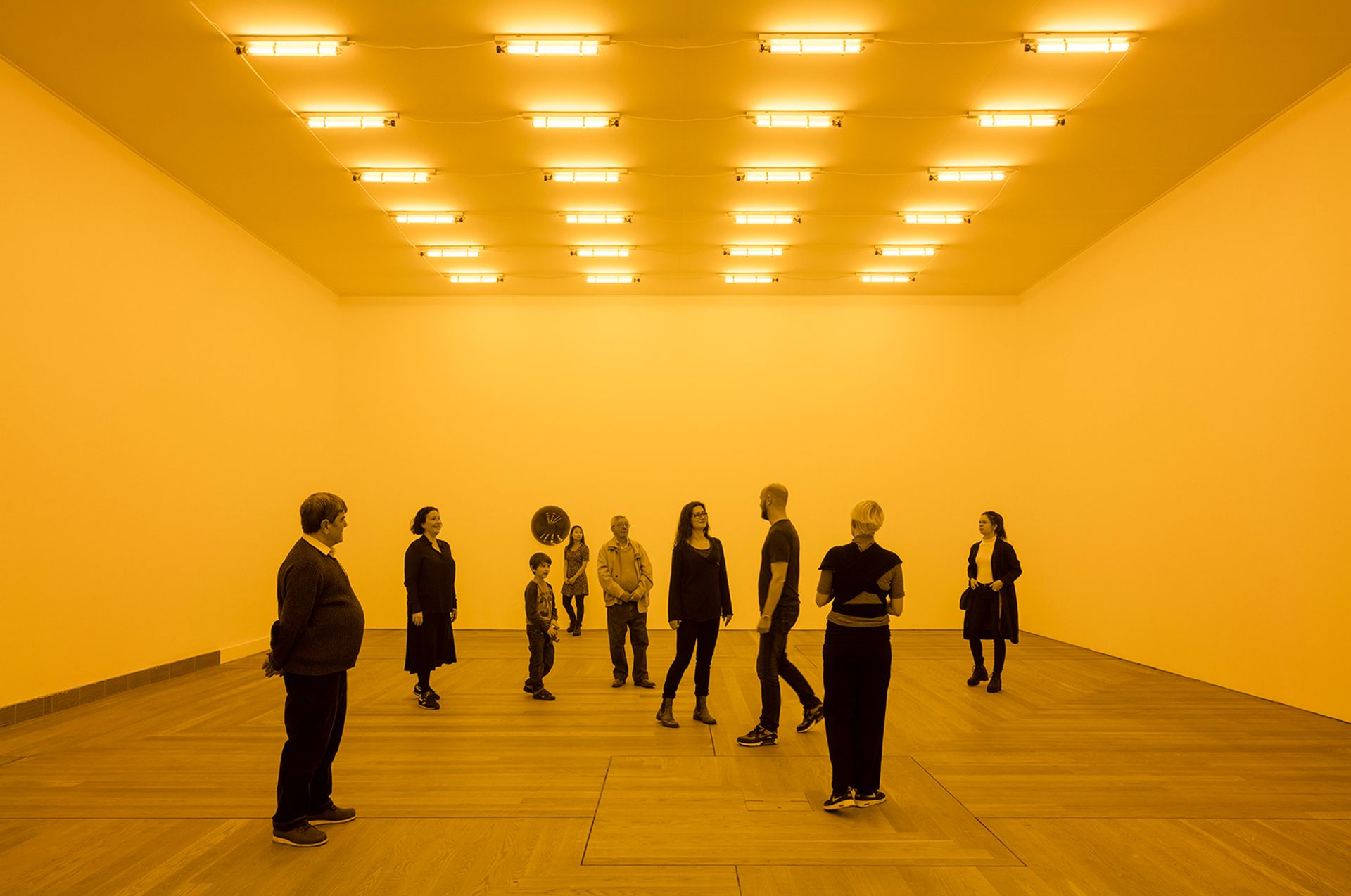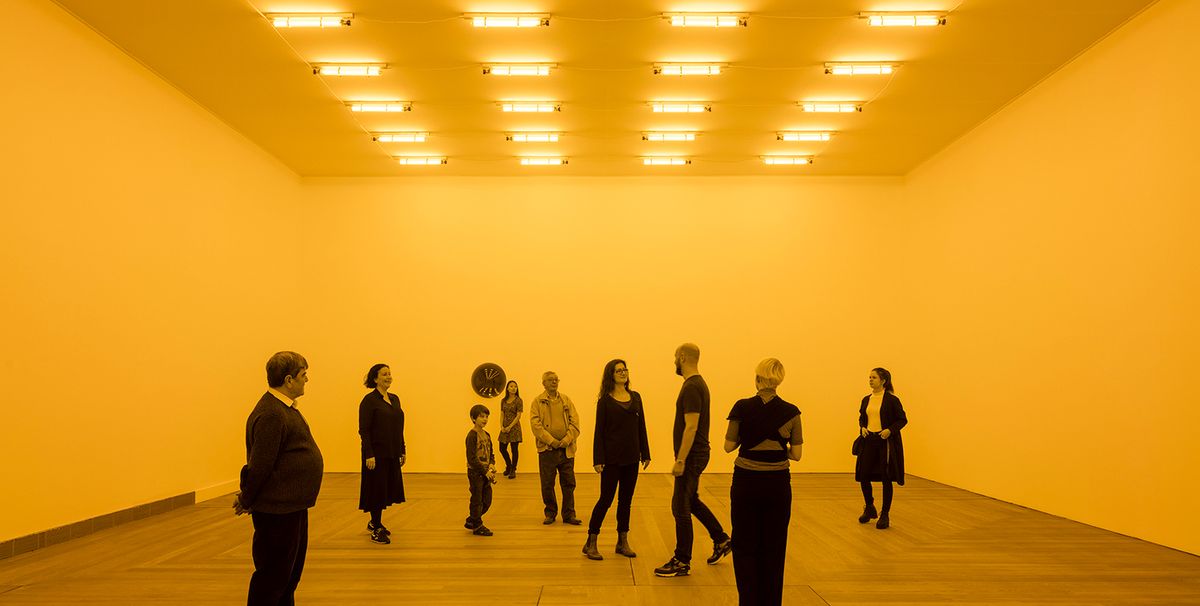Olafur Eliasson’s installation Room for one colour (1997) is the final work in the National Gallery’s exhibition Monochrome: Painting in Black and White (until 18 February 2018). The exhibition spans seven centuries and includes 50 works by artists who have—in most cases—deliberately turned to monochrome in their art, whether it me black and white paintings, grisaille drawings, yellow and black stained glass or a room filled with yellow light. In this extract from Eliasson’s essay Your Monochromatic Listening, which appears in the exhibition catalogue, the Danish-Icelandic artist explains how his work can changes viewers’ perceptions.

Olafur Eliasson Olafur Eliasson. Photo: Anders Sune Berg
In the installation, Room for one colour (1997), the entire space is bathed in light from mono-frequency lamps that emit light of around 589 nanometres in wavelength, in the yellow region of the visible spectrum. At first you see only a saturated yellow light that makes all colours appear to be shades of yellow, grey and black. Once you become comfortable with this situation, with the degree of abstraction it entails, you can start to pay attention to what is actually happening with your vision as such. The experience may vary, but the most obvious impact of the yellow light is the realisation that reality outside is very much conditioned by our perception of it: vision itself is not objective, and this realisation can help us begin to see ourselves and our world in a different light.
A very clear example of this is how the brain adjusts the colour of known objects to make them appear the same colour in radically different lighting conditions: experiments have shown that if we look at a desaturated image of a bunch of bananas, for instance, our brain corrects what we see according to what we know, tinting the bananas yellow. Colour and consciousness of colour are not fixed things, set in stone; like all aspects of our reality, they are relative.
If our perceptive apparatus were altered, the world would appear different to us. Imagine, for example, if we could see infrared or ultraviolet light in addition to the spectrum that we can perceive. Research into colour perception in animals and the colour-blind has shown us the importance of colour for how we grasp and relate to the world. The late Francisco Varela, whose work on empathy and embodiment has been deeply influential to me as well as to many scientists and philosophers, argued that the gulf between what we humans experience of colour and what birds experience is so great that we cannot even imagine it; it is like telling someone who only perceives the world in two dimensions that there is a third.

Olafur Eliasson’s Room for one colour (1997). Installation view at Moderna Museet, Stockholm, in 2015 Olafur Eliasson. Photo: Anders Sune Berg
The experience of monochromatic light offers us an opportunity of imagining another perspective, of viewing the world with a recalibrated perceptual apparatus. It makes us aware of the limits of our senses and helps us to see the relativity of our colour perception. Understanding how we see colour can make us reconsider how we constitute the world. By reducing experience to the minimum, the monochrome allows us to reflect on what is happening when we perceive something, on how perception is also a type of world-making. For a moment, we can imagine what it might be like to become colour-blind or another species of animal or even more radically other. What strange, new worlds might emerge then?
• This is an edited extract from ‘Your monochromatic listening’, pp. 209–11 (© 2017 Olafur Eliasson). It was first published in the exhibition catalogue Monochrome: Painting in Black and White, National Gallery Company Limited, London, 2017


